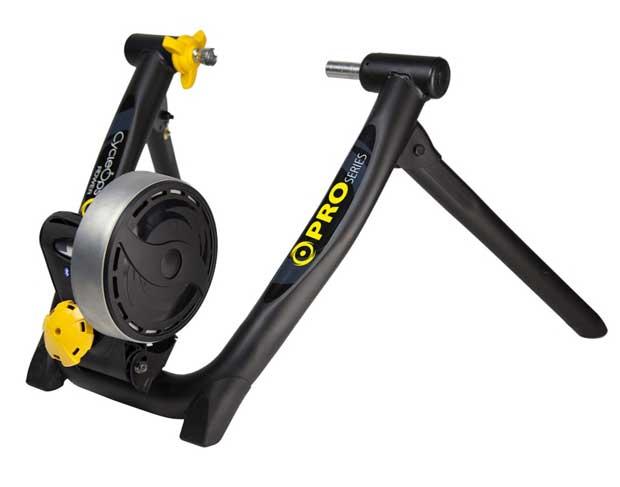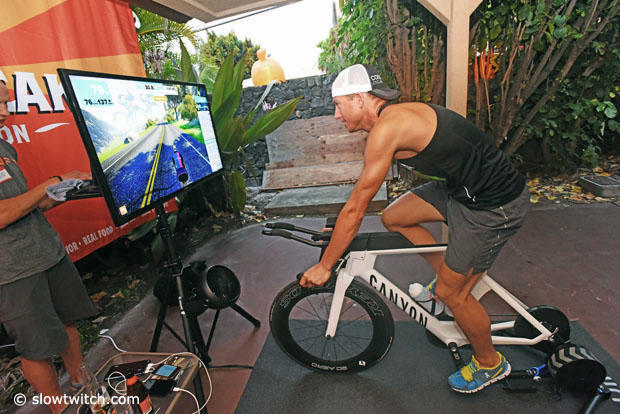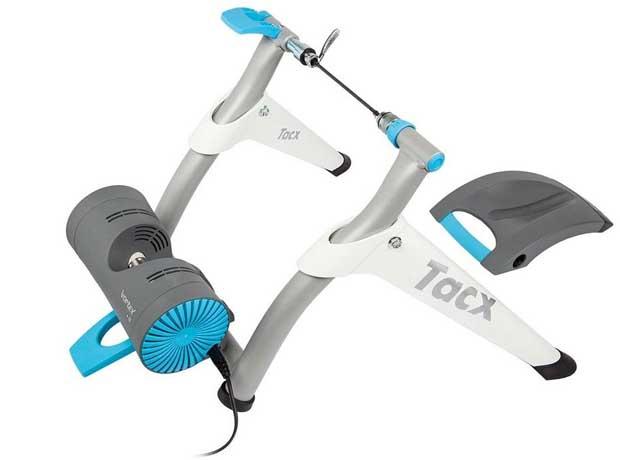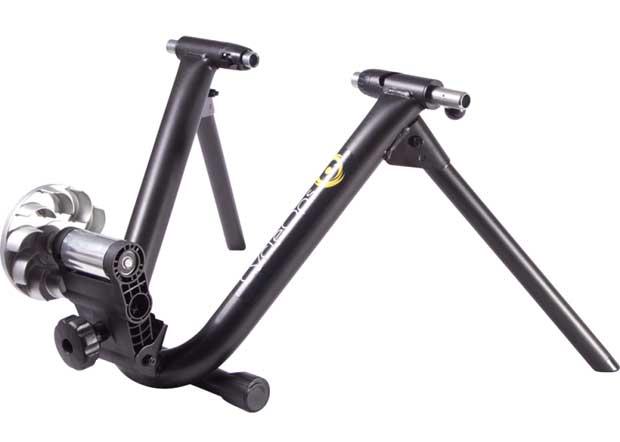Smart Trainers
Unlike children where a precocious tendency might be a sign of intellect, there is no value in a sassy trainer. What makes a trainer smart is that it does what it is told.
A proper wordsmith might precisely describe as smart an electronically-braked trainer capable of allowing external software to simulate resistance.

A trainer becomes smart when a software application controls resistance. Based on data received from a software application, smart trainers can simulate riding hills and faithfully induce specified interval intensities (wattage as the operative metric).
One popular use for smart trainers is to virtually ride a course, or race another person. Many of the software options available for smart trainers will be discussed upcoming when we focus on virtual training and racing.

Another feature pretty much mandatory with all smart trainers is the ability to quantify cycling metrics such as actual power, cadence, and virtual speed, and to memorialize a session in an exportable file.
The smart trainer has become one of the most popular training tools in triathlon. These have been around for upwards of 30 years, and for most of that time Computrainer held a hegemony over the category. But the category has exploded in recent years and it's not the trainer itself, but the marriage of its mechanical ability with compelling software platforms. This marriage is what has fueled the upsurge in sales of smart trainers.

Much of the credit for the explosion in smart trainer sales belongs to Wahoo. It was the first major smart trainer to open its operating system to third-party developers, which in turn wrote apps for smart trainers. Today, nearly all new smart trainers have followed their lead.
Just like turbo trainers, smart trainers are also available in either direct drive (Wahoo KICKR above left) or a wheel-on designs (Wahoo KICKR SNAP on the right) and each has its strengths.

Smart trainers are available beginning at a price of $500 (Tacx Vortex Smart, above) ranging up to $1600 (Tacx NEO, below). The features that scale with price are maximum watts (800 all the way up to 2500) the incline (8 percent to 25 percent) the trainer can handle, and the size of the flywheel, which delivers a more road-like sensation. Direct mount trainers will be the most expensive, and will measure power with a slight bit more accuracy and generally deliver a more natural, road-like ride.
Nearly all recent models of smart trainers transmit and receive data from devices in all formats (e.g. Bluetooth, Ant+, FE-C), support third-party software, and allow for firmware updates.
Of note, there are at least two trainers on the market (i.e., Kinetic Smart models and the Tacx Satori Smart) that are labelled smart but they don’t meet the criteria established above. Although each model can broadcast various cycling metrics, including virtual power, they do not allow third-party applications to electronically control resistance. But they’re not simply dumb trainers either. They’re in between.

As with the original iPhone and other open-source devices, what drives the interest in smart trainers is the functionality of third-party apps. Virtual training and racing animates and extends the utility of the smart trainer. What makes this year's smart trainers better than last year's? Newer models mostly focus on reducing noise and improving the accuracy and feel.
As with power meters, what's pushing the category isn't marginal improvements in accuracy in the electronics. Rather, it's finding new ways to use the data. With power meters that means cycling analytics. Smart trainers? It's community – the ability to train and race with others, real time, or at least to share and compare efforts with a community of riders.
We’re now at the point where third-party makers of training and racing apps will drive smart trainer buying decisions. Upcoming is our reporting on the state of virtual training and training; perhaps this will help you make your decision on what smart trainer to purchase.


